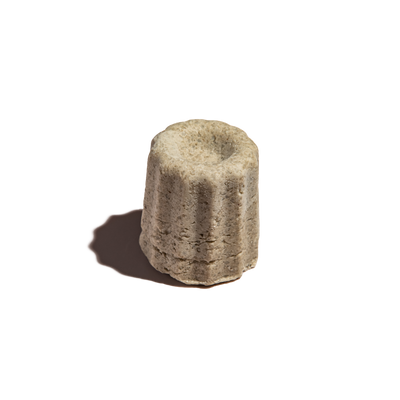The difference between Serums, Facial Oils and Moisturisers (and when to apply them)

Confused by all the different types of hydration out there? You're definitely not alone. We will go through the basics of what they are, their function, how and when to use them!
In a nutshell
Serums and facial oils are made to penetrate the skin on a deeper level, whereas a moisturiser locks in hydration and protects the surface of the skin. Therefore, the layering effect of a serum, oil and moisturiser will ultimately balance and hydrate the skin. There aren't any strict rules about when or in what order to apply them. Rather, it is a matter of testing out what works best for you and your skin.
Serums or Elixirs
Serums can be seen as supplements to target a specific concern, from pigmentation to acne to dryness. They are formulated with a higher concentration of active ingredients and made to penetrate further into the skin. Due to its concentration, these products also tend to be more expensive.
Skin types:
ACNE-PRONE/OILY - Choose serums that are balancing, smoothening and hydrating. Recommended actives include Bakuchiol, Vitamin C, Hyaluronic Acid, Niacinamide.
DRY - Choose serums that will replenish moisture and target fine lines. Recommended actives include Hyaluronic Acid, Amino Acids, Peptides, Niacinamide
PIGMENTED - Choose Bakuchiol over retinols or other peeling agents. It is a much safer ingredient that does not make your skin sensitive to the sun nor strip its protective layers.
SENSITIVE/ECZEMA - Choose serums that help rebuild the skin barrier such as Hyaluronic Acid, Ceramides and Niacinamide.
How to use it:
After cleansing and toning, you can proceed to apply the serum over the entire face and neck. Gently tap it in with your fingertips.
Precautions:
Because serums are super potent, more is not always better. Be careful before piling it on. Powerful ingredients can sometimes irritate sensitive skin. Always patch-test accordingly.

Facial Oils
We like to see these as the foundation of any good skincare routine. Oils have a natural affinity with our skin's cutaneous lipids, and hence has the ability to penetrate down to the base of the epidermis - allowing them to be rapidly absorbed. Cold pressed from plants and nuts, these oils are the purest form of nourishment you can find for your skin. A face oil adds hydration AND nutrition. They usually consist of one or a blend of cold pressed oils high in essential fatty acids (EFAs) which our bodies do not manufacture on our own (specifically omega-3 and omega-6 polyunsaturated fatty acids). Therefore, we need to apply them topically to enhance our skin health. They are usually paired with essential oils to enhance their properties.
Skin types:
ACNE-PRONE/OILY - Choose oils that are high in Linoleic Acid which help to balance out sebum and stimulate cell renewal. Linoleic acid is an Omega–6 fatty acid. Recommended oils include Argan, Grapeseed, Sunflower, Evening Primrose and Rosehip.
DRY - Choose oils high in Oleic Acids for their hydrating and anti-inflammatory properties. Oleic acid is an Omega-9 fatty acid. Recommended oils include Avocado, Tamanu, Moringa and Olive.
PIGMENTED - Choose oils high in both Linoleic Acid and Alpha-Linolenic Acid. Alpha-Linolenic Acid is an Omega-3 fatty acid which is better consumed via your diet than applied on your skin. Rich sources include salmon, tofu, flaxseeds, walnuts and chia seeds.
SENSITIVE/ECZEMA - Choose oils that are high in Gamma Linolenic Acid (GLA) for their antifungal, anti-inflammatory, and antibacterial properties that might make it useful in healing wounds, soothing eczema, and relieving rash. Recommended oils include Evening Primrose, Borage and Blackcurrent.
How to use it:
After applying the serum, put around 4 to 5 drops of the facial oil onto your palms and rub them to heat them up slightly. Gently press onto your face and neck. You can also use them in together with your facial massage tools such as a Gua Sha or facial roller.
Precautions:
As these oils are extracted from natural plants and nuts, it is good to do a patch test in case of any allergies.

Moisturisers
Moisturisers are products made from a combination of oil and water and made to feed moisture into the skin. They are made with emulsifiers to bind oil to water and create stability. Because of this, the molecular structure is larger, so they only penetrate the upper layers of the skin. This makes it very suitable for those prone to dryness, but not so beneficial for oilier skin types.
Skin types:
ACNE-PRONE/OILY - We generally recommend oily skin types to stick to using the facial oils above, but if you prefer moisturisers, go for water or gel-based formulas rich in humectants.
DRY - Choose moisturisers with ingredients that help boost hydration levels on the surface, and reduce transepidermal water loss (TEWL) - the process of water evaporating from your skin's surface, resulting in that uncomfortable tight and dry sensation. Recommended actives include Hyaluronic Acid, Amino Acids, Peptides and Niacinamide.
SENSITIVE/ECZEMA - This is quite similar to dry skin types where you are aiming to reduce TEWL. On top of hydration, keep a lookout for anti-inflammatory ingredients such as Aloe Vera, Calendula and Camomile. Wherever possible, avoid any fragranced product.
How to use it:
Gently glide the product across your forehead, cheeks, chin and neck.










Leave a comment